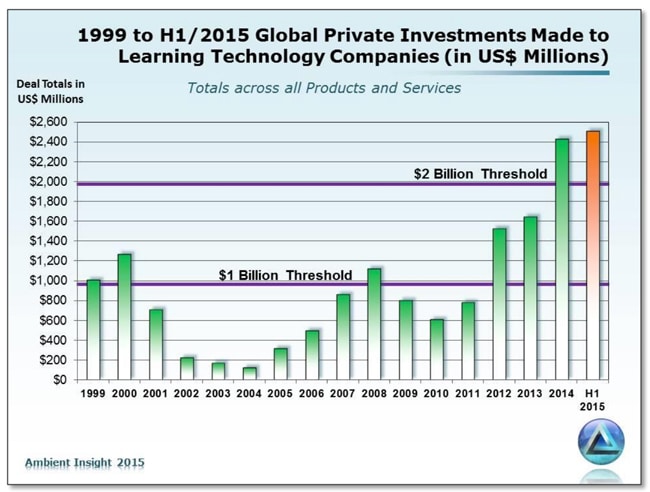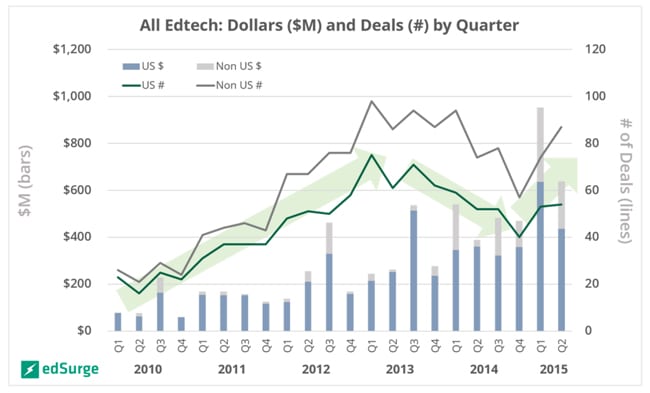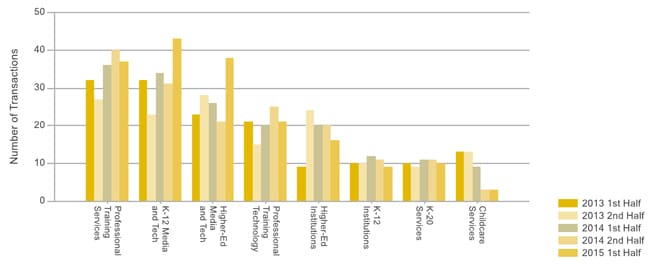Investments in education technology reaching new highs in 2015
You can count investment deals in the education technology sector a number of different ways, particularly depending on how you define “ed tech” in the first place. The latest figures for the first half of 2015 certainly reflect this variability, with some of the more prominent investment tallies ranging from US$1.6 to US$2.5 billion worldwide. But is a photo sharing app ed tech? And should we include that new classroom management software? Leaving aside the nuances in some of these deal counts, a few things are quite clear at the midpoint of the year.
Deal activity is surging
First, investment in education technology is on the rise and has reached a new high. Ambient Insight counts US$2.5 billion in deals over the first half of the year, a figure that is already greater than Ambient’s total for all of 2014. The Ambient tally highlights 262 deals that were done between January and June 2015, reflecting a 66% increase over the total for the first half of 2014.



China is becoming a bigger player
While the US continues to account for a fair bit of investment activity in the sector, China has emerged as both an important host and source of significant investments this year. Ambient reports: “In the first half of 2015, US$798.6 million went to 20 learning technology companies operating in China; this was 32% of the total investment that went to all companies combined around the globe. This is extraordinary considering that the total investment made to Chinese learning technology companies for the entire year of 2014 was US$634.4 million, which was 26% of all global investments.” Investment in the sector in China is especially concentrated in mobile learning, with “investors particularly attracted to companies that develop mobile English language learning apps and mobile edugames for young children.” The report notes India and Brazil as two other markets that have attracted greater investor interest for ed tech in 2015. While both remain far below the investment levels seen in China this year, both have also seen significant growth in deal volumes and values through June 2015.
Consumer-facing tech wins
In contrast to investment patterns of several years ago, the latest tallies reflect that the bulk of new money in the sector is going to support consumer-facing education technologies - that is, products or services marketed directly to consumers.
This is an important indicator of the growing mainstream adoption of learning technologies. Of particular interest to international educators, Ambient reports that online language learning is the top selling learning product type in every consumer segment across the globe.
Consumer-facing investments for the first half of 2015 totalled US$1.4 billion, and, in keeping with the theme for this year, already surpassed the US$984 million in financing for consumer ed tech in all of 2014.
















